Do I Need to Water My Trees & Shrubs in Minnesota?
The answer depends on the age of the tree or shrub. Newly planted trees and shrubs need regular watering for approximately two years to help establish roots. Mature trees and shrubs native to Minnesota do not require frequent watering unless there are drought conditions. During long periods without rainfall, such as the drought through 2021 and 2022, trees and shrubs may experience decline or die without supplemental irrigation.
As changes in our climate patterns continue, there may be a more frequent need for homeowners to protect their landscape assets. Below are recommendations from our tree care experts on proper watering for your trees and shrubs.
How often should I water a newly planted tree or shrub?
You will want to regularly water a new planting in the Minneapolis area until the root spread equals the spread of the above-ground canopy. While this can be hard to measure, a safe bet is to plan on watering your new planting for two years at the following intervals:
- Water daily for the first two weeks after planting.
- Water every 2-3 days for 3-12 weeks after planting.
- After 12 weeks, water weekly until roots are established.
How should I water trees and shrubs?
- Use an ‘owl eyes’ sprinkler
This is the preferred method to keep your tree irrigated. An ‘owl eyes’ sprinkler can be found at hardware stores, and attaches to the end of a garden hose. - Use a soaker hose
Wrap the hose around the base of the tree at least 1-2 feet from the trunk. Turn the water on in the morning and let it run all day. Do this once a week during summer drought periods. - Use a garden hose set to trickle
A trickle is more than a drip and less than a gurgle. Visually divide the area around your tree into four sections. Place the hose about 2-3 feet from the trunk in section one and let the water soak into the ground for about two hours. Move the hose to each section every two hours until you have thoroughly watered all four quadrants over a day. Repeat once a week during summer droughts. - In-ground irrigation
Set your system to run an extra hour in the zones where you have trees and shrubs. This will allow the water to penetrate through the turf roots and thatch and allow more water to soak down to the roots of the trees. Be sure that the sprinkler heads are positioned so that they are not hitting the trunk of the tree.
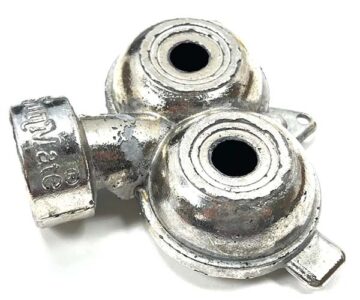
How to use an ‘owl eyes’ sprinkler:
Place under the tree about 2-3 feet from the base and water until soil feels moist, not saturated. Follow the time recommendations based on tree size.
- 15 minutes for a 10″ diameter tree
- 20 minutes for a 15″ diameter tree
- 30 minutes for a tree 20″ in diameter or larger
Repeat weekly during the growing season.
What happens if trees and shrubs don’t get enough water?
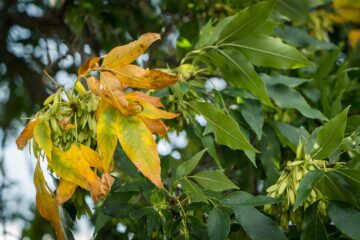
Trees and shrubs in the Minneapolis and St. Paul metro are more prone to drought damage and death than natural stands of trees and if they do not receive enough water are unable to create new growth. Signs of drought include yellowing or browning of leaves out of season.
When this happens, root development is reduced, plants are more susceptible to insects and diseases, and response to wounding from pruning or breakage is limited. As trees and shrubs reach this stage, they start to shut down and become targets for diseases and insects that can kill them.
What if I think my trees or shrubs have damage due to drought?
One of our Certified Arborists can inspect your trees and shrubs to identify drought stress. Additionally, they can manage everything to keep your trees and shrubs healthy and looking their best. Contact Us to schedule a consultation today!
Other items you may be interested in:
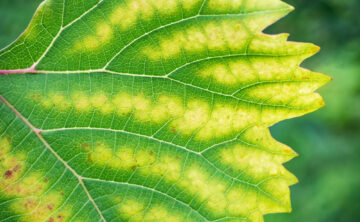
Abiotic Tree Disorders
Preventing & Controlling Abiotic Tree Disorders in Minnesota There are two types of tree disorders. Disorders caused by living things such as insects, bacteria, fungi,
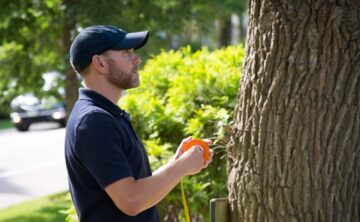
Consulting & Diagnosis
Tree Health Assessment, Consulting, & Diagnosis in Minnesota Are you worried about the health of a tree or shrub in your landscape? Getting it assessed
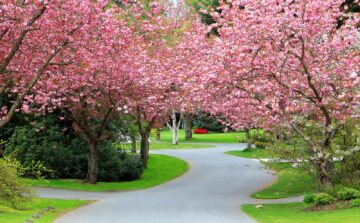
Spring Tree Care Checklist for Minnesota Homeowners
Welcome your trees back from their winter slumber with a little love and care. Spring is an important time for the trees and shrubs in



